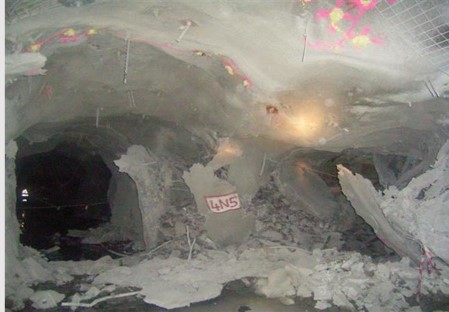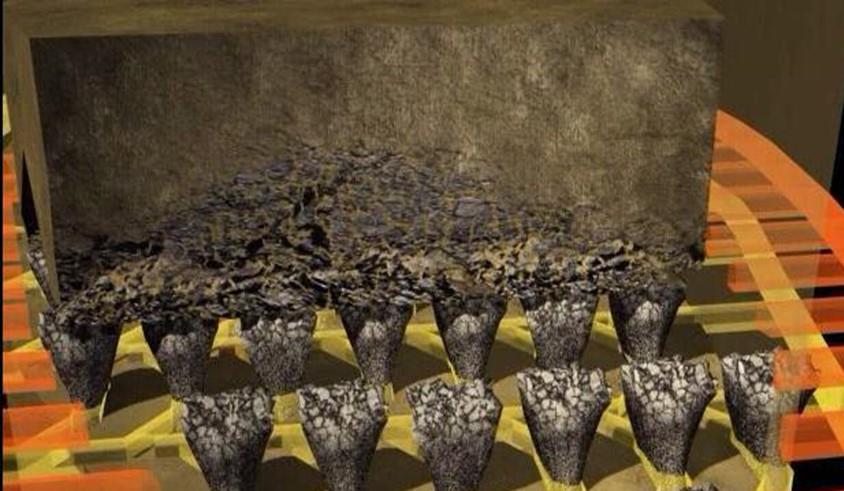Critical metals future – the copper example
Copper is a strategic metal that is critical to the development of emerging economies and essential for the transition from fossil fuel energy. Thus the demand for copper supply is predicted to grow exponentially, with the bulk of future production emanating from deep underground mass mining methods which have far smaller footprints than conventional large open pits and offer more sustainable and responsible mining practices with improved compliance to the growing environmental, social and governance (ESG) demands.
Future ESG Demands on Mining
In response to the social and environmental pressures to reduce mining footprints and minimise surface disturbance, several mining companies have committed to no longer develop new large open pit mines, and thus by default, future mine production will need to come from underground and/or alternate subsurface extraction methods.
The convergence of unprecedented mineral and metal demand with ever increasing ESG constraints, threatens to undermine global social and environmental objectives. Although ESG reporting is not yet mandatory in all countries, public listed companies in Australia are required to disclose their ESG risks to their shareholders, and governments are considering the introduction of ESG metrics to aid in meeting their objective of carbon neutrality by 2050.
It has become common practice for all proactive, major mining companies to publish sustainability reports that outline their sustainability programmes that ensure that their operations are conducted in a manner that protects the environment and local communities, while also meeting the requirements of relevant laws and regulations. These sustainability reports are all very similar in content, they highlight their investments in technology and innovation to reduce the environmental impact of mining, improve worker safety, and engagement with local communities. They frequently discuss their efforts to reduce their carbon footprint, protect water resources, and minimize waste. However none address the technical challenges and associated risks of extracting ore at depth.
Deep Mining Challenges
 Unlike ESG complexities that can be effectively managed through regulation and responsible social and environmental practices, there is a general lack of appreciation of the technical complexities and challenges associated with mining vast quantities of ore at depth using conventional underground mining methods. Currently only cave mines are capable of producing similar quantities of ore to open pit mining, and until more recently, cave mining methods have only been utilised to extract shallow to intermediate-depth orebodies; however, the past 2 decades have seen mining companies push the envelope by applying caving methods to much larger scale deposits at depths below 1000m.
Unlike ESG complexities that can be effectively managed through regulation and responsible social and environmental practices, there is a general lack of appreciation of the technical complexities and challenges associated with mining vast quantities of ore at depth using conventional underground mining methods. Currently only cave mines are capable of producing similar quantities of ore to open pit mining, and until more recently, cave mining methods have only been utilised to extract shallow to intermediate-depth orebodies; however, the past 2 decades have seen mining companies push the envelope by applying caving methods to much larger scale deposits at depths below 1000m.
As mining progresses deeper underground, it is typically accompanied by an increase in stress magnitudes. Deep mines have high stresses which tend to dominate the response of the rock mass, sometimes resulting in rock mass, structural or excavation failures, increased seismicity or influencing the material flow in cave mines. Although all deep mining shares common stress related risks, their impact is far greater in deep cave mines, owing to the method’s inflexibility, significant upfront commitment and difficulty in recovering from adverse geohazards.
 To date the technical success of deep, sub-1000m, underground cave mines has proved questionable, with most experiencing some form of underperformance; notably attributed to unforeseen or poorly predicted geohazards or geotechnical related issues, culminating in development and construction delays, loss of resource, reduced production rates and/or higher operating costs than were predicted and relied upon to justify the original capital investment.
To date the technical success of deep, sub-1000m, underground cave mines has proved questionable, with most experiencing some form of underperformance; notably attributed to unforeseen or poorly predicted geohazards or geotechnical related issues, culminating in development and construction delays, loss of resource, reduced production rates and/or higher operating costs than were predicted and relied upon to justify the original capital investment.
The solutions to deep mining challenges do not only reside in new technologies such as mine automation, energy transformation and artificial intelligence, but also in better understanding the fundamental geomechanics that dictate the rock mass response to deep mass mining.
Deep Mining Geoscience Group
Fundamental mining research, particularly in deep mass mining geomechanics, is crucial to focus and accelerate the development of enabling technologies and ensure that they provide a complete solution in guaranteeing the reliability of future underground production.
In an effort to address the technical challenges and risks associated with deep mass mining methods, the WH Bryan Mining Geology Research Centre (BRC), within the Sustainable Minerals Institute (SMI) at The University of Queensland, has formed a ‘Deep Mining Geosciences’ (DMG) group which is tasked with developing a strong industry-collaborative programme of applied mining research and education in the area of Deep Mining Geoscience. The advantage of having the DMG group reside within SMI is that it is well placed to draw on the vast expertise within SMIs multidisciplinary, world-class ESG, geology and mineral processing research centres.
The future of mining large quantities of strategic metals, with copper at its core, lies underground, and the future of underground mining resides predominantly in deep, underground mass mining methods, as only these have the ability to yield the vast quantities required to meet the world’s increasing demand.
To address the challenges associated with deep mass mining, the Deep Mining Geoscience group is well-positioned to play a leading role in mining research that will provide the knowledge required to inform the development of technological enablers. Furthermore, the broader expertise that resides within the SMI will ensure that ESG considerations form part of the research thereby providing more holistic and complete solutions for future deep mass mining.
The Challenge
“High-quality copper is becoming harder to find and extract. As grades decrease, strip ratios rise and deposits get deeper, more water and energy is required for the same amount of copper output.
In order to fully seize the opportunity to be part of a sustainable future we need to minimise our material and environmental footprints. Our focus must be on high quality resources defined by more extractable metal per kilowatt hour and ton of water.
This must now be a key consideration in the exploration and evaluation phase: we must find resources that can become mines, and operate feasibly under higher sustainability standards.”
– Laura Tyler, Chief Technical Officer, BHP
Sustainable Minerals Institute
At SMI, we are working collaboratively with industry and research partners bringing both depth and breadth of expertise to our research and consulting work. We are training the next generation of industry and community leaders through Higher Degrees by Research and through a growing number of professional development programs.

